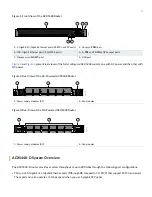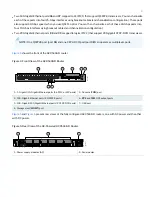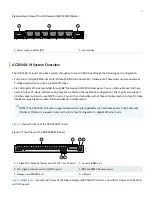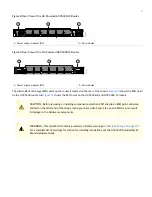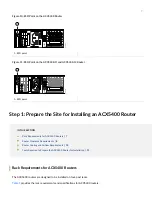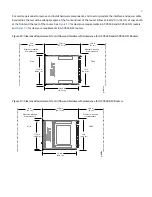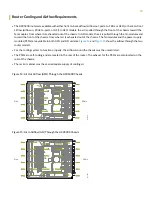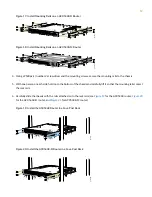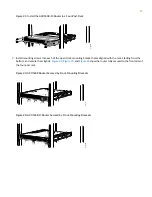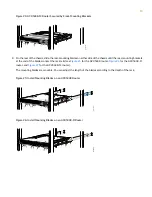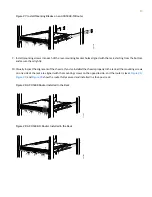
•
Two 100-Gigabit Ethernet ports (36 and 37, mapped to CLI PIC 1) that support QSFP28 transceivers. You can channelize
each of these ports into four 25-Gbps interfaces using breakout cables (and channelization configuration). These ports
also support 40-Gbps speed, when you use QSFP+ optics. You can then channelize each of these 40-Gbps ports into
four 10-Gbps interfaces using breakout cables (and channelization configuration).
•
Two 200-Gigabit Ethernet ports (38 and 39, mapped to logical PIC 2) that support 200-gigabit CFP2-DCO transceivers.
NOTE:
One QSFP28 port (port 36) and one CFP2-DCO port (port 38) can operate as multiplexer ports.
shows the front of the ACX5448-D router.
Figure 4: Front View of the ACX5448-D Router
g100500
3
2
4
5
1
6
7
5
—
1
—
Console (CON) port
1- Gigabit/10–Gigabit Ethernet ports (36 SFP+ or SFP ports)
6
—
2
—
PPS and 10M GPS output ports
100–Gigabit Ethernet ports (2 QSFP28 ports)
7
—
3
—
USB port
100–Gigabit/200-Gigabit Ethernet ports (2 CFP2-DCO ports)
4
—
Management (MGMT) port
and
present rear views of the fully configured ACX5448-D routers, one with AC power and the other
with DC power.
Figure 5: Rear View of the AC-Powered ACX5448-D Router
g100701
2
1
1
2
—
1
—
Fan modules
Power supply modules (AC)
4



